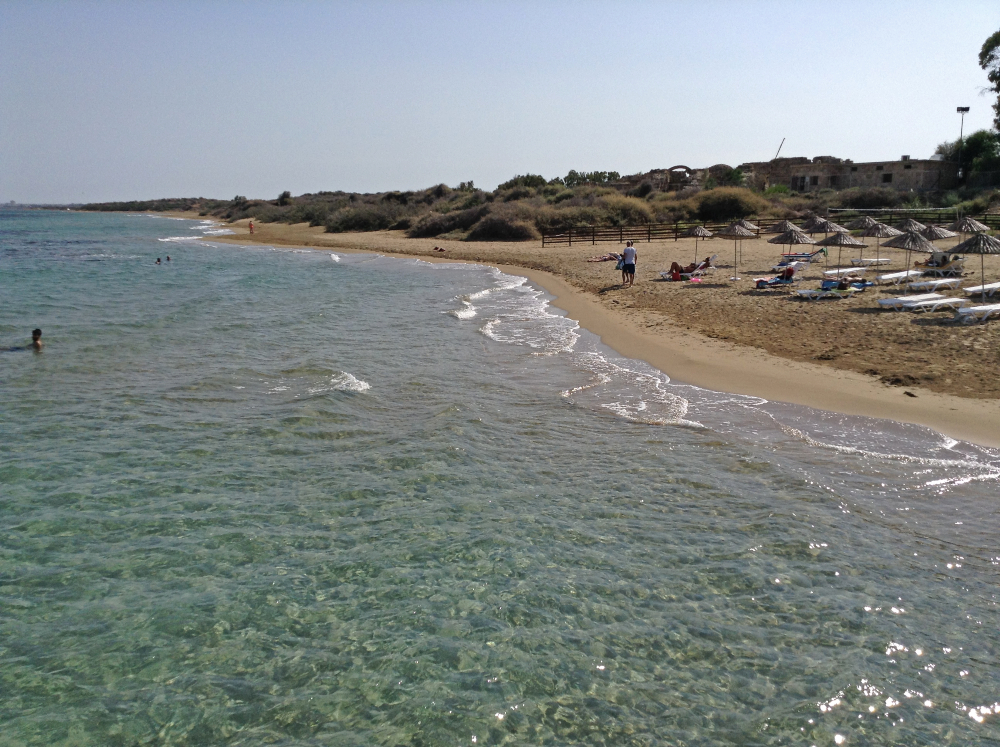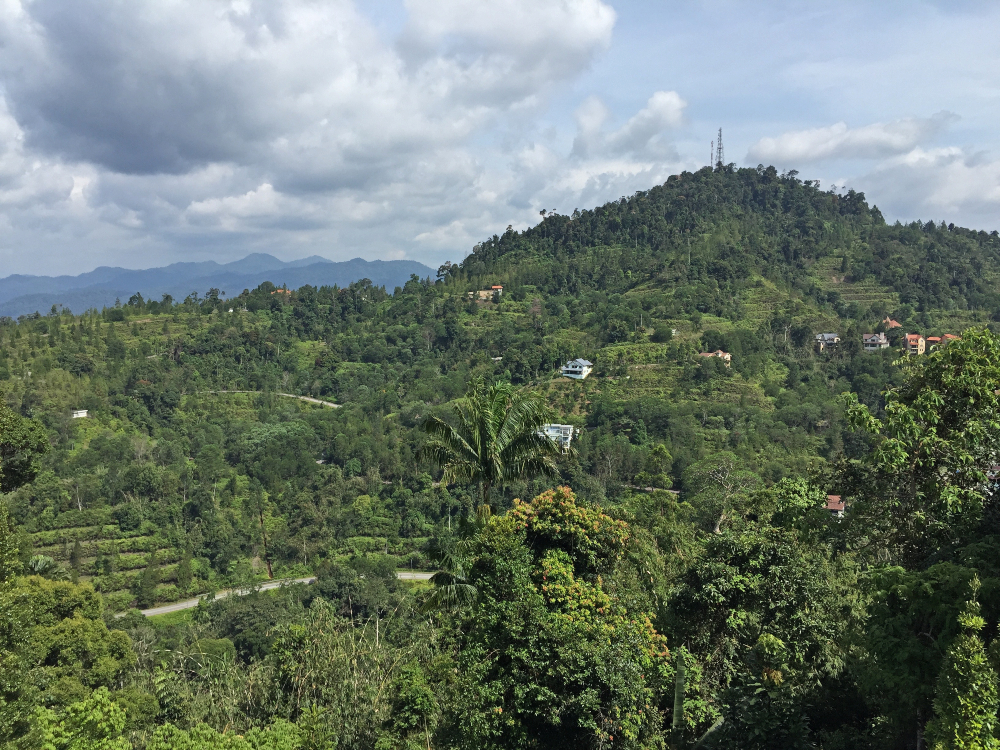Soaring energy prices are affecting people all over the world. Here in UK, people are feeling the pinch, especially those on fixed incomes, like retirees. My last bill for heating oil cost 108 pence per litre, compared to just 30 pence a year and a half ago.
This got me to thinking. Wouldn’t it be great to live in a place where the temperature was comfortable all year round and you didn’t have to spend money on heating or cooling your home. Do such places exist and, if so, where are they?

What Climate is the Healthiest?
First of all you have to define what constitutes perfect weather. This is subjective. Lots of people in Britain complain of feeling too hot when the temperature rises above the 25°C mark (that’s 77°F in old money) but for me, having spent many years in desert and tropical countries, 25°C is just starting to get comfortable. But I am in the minority.
Surveys have indicated that, for Europeans at least, the preferred temperature range is 20 to 26°C and that 22 or 23°C is considered ideal. Warm, dry and sunny weather without extremes of heat or cold is known to be beneficial to physical and mental health.
Which Places Have These Ideal Temperatures Year Round?
If you Google for an answer to this you will come up with various lists of places. One of the more systematic studies is this one by Mr. Nolan Gray where the author ranked 194 cities around the world and determined whether or not you would need air-conditioning and/or heating based on their daily mean and average high/low temperatures.
The author concluded that the 13 cities in the world with the best year round temperatures are as follows:
Antananarivo, Madagascar
Bogotá, Colombia
Caracas, Venezuela
Durban, South Africa
Guatemala City, Guatemala
Lima, Peru
Mexico City, Mexico
Nairobi, Kenya
Port Elizabeth, South Africa
Quito, Ecuador
San Diego, California
São Paulo, Brazil
Sydney, Australia
with Guatemala City having the absolute perfect climate.
That’s very interesting and I’m sure these are beautiful places but most of the names on that list do not strike me as retirement destinations when you take things like crime, safety, medical facilities and so on into account. It is no use having an ideal climate if you are too scared to step outside your front door! Even Sydney, which is ideal in many ways, suffers from high property prices and Australia does not grant retirement visas. Nor does USA. So unless you are American or Australian, or have some connections in those countries, you will probably not be allowed to retire there.
What About Europe?
A number of European regions rank highly on the ‘best weather’ lists that you can find on the internet. These include the Canary Islands, Madeira, Andalucia, the Greek Islands and Cyprus.
I have chosen one city from each of these five areas and compared them weather-wise using statistics found on climate-data.org . The five cities I have chosen are Santa Cruz de Tenerife, Funchal (Madeira), Malaga (Spain), Chania (Crete, Greece) and Paphos (Cyprus).
| Climatic Features | Tenerife | Funchal | Malaga | Chania | Paphos |
|---|---|---|---|---|---|
| Temperature Range °C | 14-23 | 11-24 | 8-28 | 8-27 | 10-29 |
| Avg. Temperature | 18.5 | 16.6 | 17.6 | 17.2 | 19.6 |
| Avg. Humidity | 75% | 74% | 70% | 70% | 71% |
| Rainfall mm. per year | 281 | 582 | 485 | 853 | 365 |
| Rainy Days per year | 49 | 83 | 48 | 69 | 41 |
| Hours Sunshine per day | 7.6 | 5.7 | 9.2 | 9.3 | 9.8 |
| Months with average temperature below 15 | 3 | 6 | 7 | 5 | 5 |
| Months with average temperature above 26 | 0 | 0 | 2 | 0 | 4 |
| Average High/Low Sea Temperature | 18 / 23 | 18 / 24 | 15 / 23 | 14 / 25 | 17 / 28 |
Santa Cruz de Tenerife, Canary Islands, Spain

This city’s temperatures move in a comfortable range of 14.3 – 23°C with an annual average temperature of 18.5°C. The average humidity is 75%, the highest of the 5 areas but all of them have humidity in the 70-75% range so we can ignore humidity for this comparison.
Rainfall is sparse with just 282mm per year so parts of the island are very arid although the northern slopes have rainfall and are green as shown in the above postcard..
Sea temperatures in Tenerife are swimmable all year round (15°C is considered the minimum water temperature for bearable swimming).
Overall, Tenerife has the best climate of the 5 places if your objective is to minimise your heating and air-conditioning bills but it is not as sunny as some of the others.
Funchal, Madeira, Portugal

Madeira has a similar mild climate with moderate year round temperatures but with more rainfall and fewer hours of sunshine.
Malaga, Andalucia, Spain
Andalucia is a big area with a variety of micro-climates. Cabo de Gata in Almeira for example is said to be the driest place in Europe with only 117 mm of rain annually. That might be ideal for arthritis sufferers but the scenery could be too barren for some. I have chosen Malaga for this comparison as it is the capital of the Costa del Sol.
Malaga has cooler winters and hotter summers than Tenerife and more rainfall, although the number of rainy days is almost the same. Malaga is sunnier. Most properties on sale in this area are equipped with air-conditioning and heating and presumably they are needed at times.
Chania, Crete, Greece
Chania has a lot more rainfall than the other places but still manages to average 9.3 hours of sunshine per day.
Paphos, Cyprus

Paphos has the highest average temperatures of the 5, the fewest rainy days and the most hours of sunshine. Sea temperatures are also significantly warmer in summer than the other places. More to my liking! But you would definitely feel the need for AC and heating at times.

What About Other Factors?
To find the perfect retirement destination let’s combine the climate statistics with other factors such as crime rates, cost of living and other quality of life indicators as well as the ease of getting a visa.
| Tenerife | Funchal | Malaga | Chania | Paphos | |
|---|---|---|---|---|---|
| Crime Index (low is good) | 27 | 15 | 26 | 19 | 30 |
| Cost of Living Index (excluding rent, London = 86 for comparison) | 50.92 | 49.16 | 52.52 | 57.08* | 52.86 |
| Pollution (low is good) | 38 | 24 | 30 | 25 | 37 |
| Healthcare (high is good) | 51 | 50 | 71 | 60 | 64** |
| Traffic (low is good) | 81 | 86 | 88 | 117 | 68 |
| Golden Visa Ranking | 4th | 1st | 4th | 3rd | 6th |
| Property Prices (price per sqm. outside city centre in Euro) | 1540 | 1400 | 2270 | 1466 | 1325 |
These statistics are sourced from Numbeo, a crowd-sourced global database of quality of life indicators. Some of the statistics lack sufficient data and need to be interpreted with caution but they give us a general idea.
Traffic Index is a composite index of time consumed in traffic due to job commute, estimation of time consumption dissatisfaction, CO2 consumption estimation in traffic and overall inefficiencies in the traffic system.
All of these countries have Golden Visa schemes which allow non-EU citizens (which includes us Brits post-Brexit) to apply for permanent residence in return for a minimum investment in property or other assets. The above rankings come from this website.
With the lowest crime rates, cheapest cost of living, lowest pollution and the best Golden Visa scheme, Funchal in Portugal pulls ahead of the competition.
Anywhere Else?

I also looked at other places in the world with ‘perfect’ climates which are not included on Mr. Nolan Gray’s list.
When European powers were colonising Asia they realised that by retreating to the hills they could escape the stifling heat in the plains below and they created hill stations in a number of countries. Places like Simla and Darjeeling in India do not achieve the aim of eliminating heating bills because they are knee-deep in snow in winter but Cameron Highlands in Malaysia, Da Lat in Vietnam, Nuwara Eliya in Sri Lanka, Baguio in the Philippines and Bandung in Indonesia have much more moderate climates.
The annual average temperature of Genting Highlands in Malaysia for example hits the sweet spot of 22°C with maximums and minimums constantly within the range of 22-26°C. Annual rainfall is a whopping 2548 mm but because Malaysian rain tends to fall in short, torrential downbursts, Genting still manages to average 7.6 hours of sunshine per day. At an altitude of 1865 m it is often in the clouds and with humidity reaching 90% you would probably still want to use air-conditioning, or at least de-humidifiers, to prevent your walls from turning black with mould. I guess nowhere is perfect.
I hope this little study is helpful if you are looking to reduce your energy bills by moving to a better climate.
